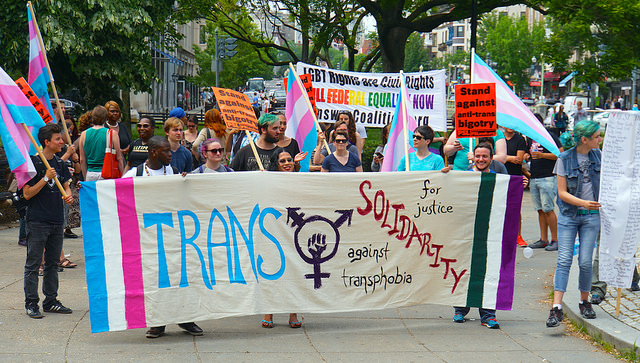
A change is rippling through the mental health profession: For the first time in the industry’s history, psychologists in the United States have been given standardized guidelines for their engagement with trans and gender nonconforming people.
The American Psychological Association (APA) released its first ever guidelines for psychological practice with transgender and gender nonconforming people on August 7.
These guidelines offer a powerful tool for educating psychologists, but they also have their limits. Although they are being officially distributed, they are not binding: Psychologists may choose whether or not to follow them.
Nevertheless, the change is a meaningful one, especially given how many trans and gender nonconforming people have experienced mistreatment from mental health practitioners. “When I tried to kill myself and was taken to a suicide center, I was made fun of by staff and treated roughly,” said one trans person in the National Trans Discrimination Survey. In a New York State survey of LGBT people, 73.4 percent of trans people said that lack of well-trained providers presented a barrier to accessing health care, and 67.8 percent said that they lacked access to mental health care.
The APA task force that created the guidelines included five trans and gender nonconforming people and five cisgender people; six were white, and four were people of color. The task force solicited comments from the public while developing the guidelines, and attracting feedback, support and criticism. According to Randall D. Ehrbar, a member of the task force, these guidelines are a product of at least 15 years of trans and gender nonconforming people advocating for change within the APA.
The guidelines correct common misconceptions. They begin with a statement that gender is not binary, and that people may have identities other than male or female. They acknowledge that trans and gender nonconforming people may have any sexual orientation and any of a variety of family structures. They also acknowledge that trans and gender nonconforming people can seek mental health services unrelated to gender.
In addition, the guidelines encourage psychologists to advocate for gender-affirming treatment in prisons or other institutions, and to get involved in efforts for social change. They point out ways that psychologists should examine and improve their language, intake forms, offices and bathrooms to eliminate discrimination.
Trans and gender nonconforming people and their allies could find these guidelines helpful when intervening with psychologists who mistreat people out of ignorance.
The guidelines are a good first step, but there is still much work to be done. For example, not all of the language gives as much guidance as one might want.
Ehrbar acknowledges the need for more research into psychological practice with trans and gender nonconforming children, which could permit the APA to add more on that subject when it revises the guidelines.
Some of the language could also be misused. The guidelines encourage psychologists who have not developed competence in this arena to refer trans and gender nonconforming people to more competent providers. In some contexts, that is appropriate. Practitioners with no experience or training in trans and gender nonconforming issues should not agree to assess whether a trans or gender nonconforming prisoner needs gender-affirming hormones – they should insist the prison contract with someone competent to do that evaluation.
Other times, though, psychologists – like other service providers – claim a lack of competence as a cover for prejudice. A psychologist experienced in treating agoraphobia may not discriminate against a trans or gender nonconforming person seeking treatment for agoraphobia in the name of “competence.” Refusing to discriminate is especially important because, in many places, turning trans and gender nonconforming people away means that they will not be able to get any services at all.
Finally, the guidelines do not – and likely cannot – touch some of the more systemic issues related to access to mental health care, freedom from unwanted mental health care and the role of psychology in maintaining power structures. For example, many psychologists do not accept insurance, and those that accept private insurance do not always accept Medicaid. Given poverty in trans and gender nonconforming communities, many people cannot afford treatment. And for decades trans and gender nonconforming people, including Chris Bell, Dylan Scholinski and Elliot Fukui, have spoken against involuntary commitment and related abuse. Psychology – like other professions – has also been deeply involved in systems such as the criminal legal system and the military, which harm trans and gender nonconforming people, poor people and people of color.
All psychologists ought to read these guidelines and keep a copy on their desks. And they should also challenge themselves to create accountability to trans and gender nonconforming and other marginalized communities within the mental health profession.
Join us in defending the truth before it’s too late
The future of independent journalism is uncertain, and the consequences of losing it are too grave to ignore. To ensure Truthout remains safe, strong, and free, we need to raise $24,000 by the end of today. Every dollar raised goes directly toward the costs of producing news you can trust.
Please give what you can — because by supporting us with a tax-deductible donation, you’re not just preserving a source of news, you’re helping to safeguard what’s left of our democracy.